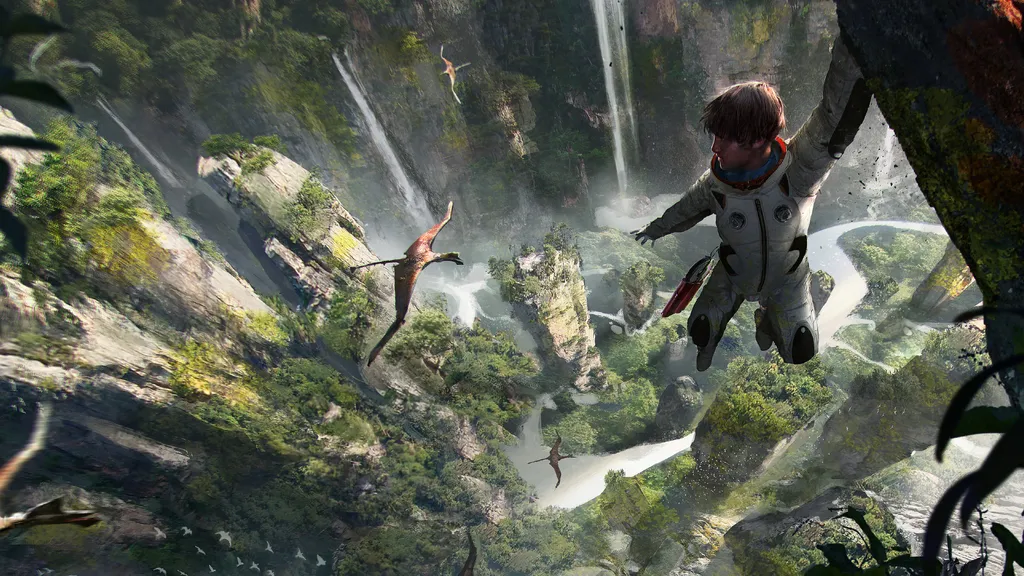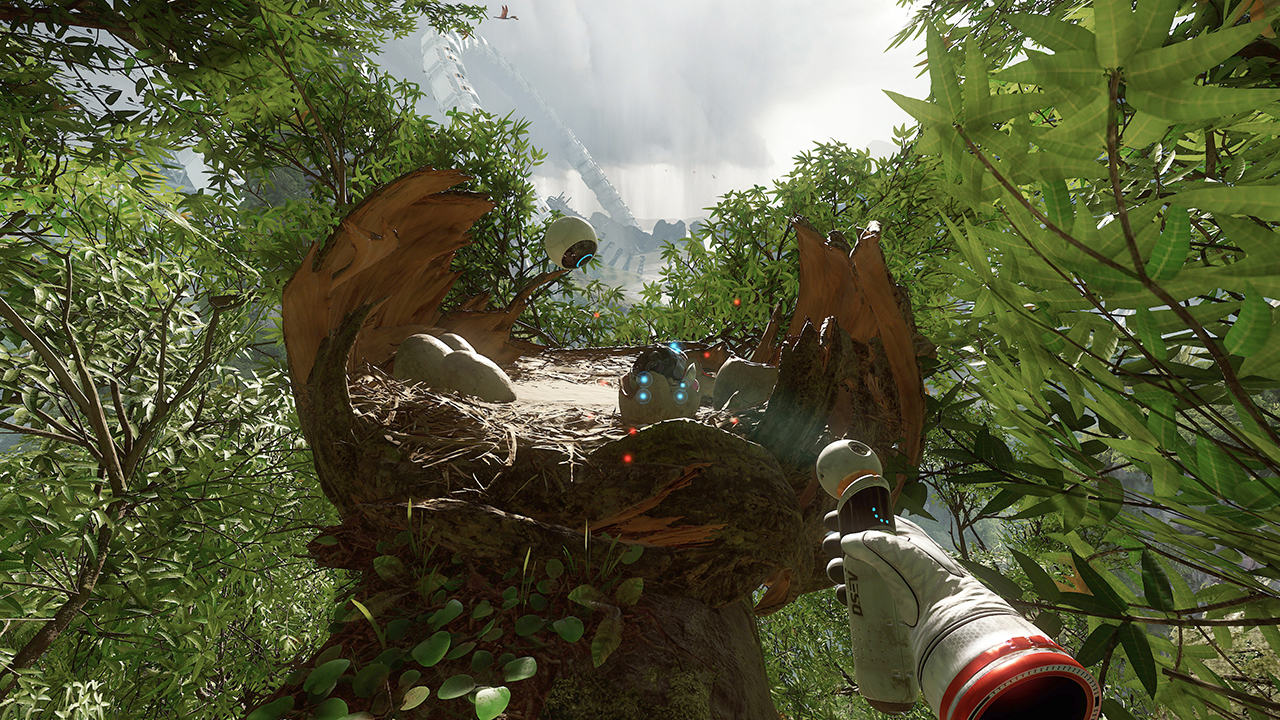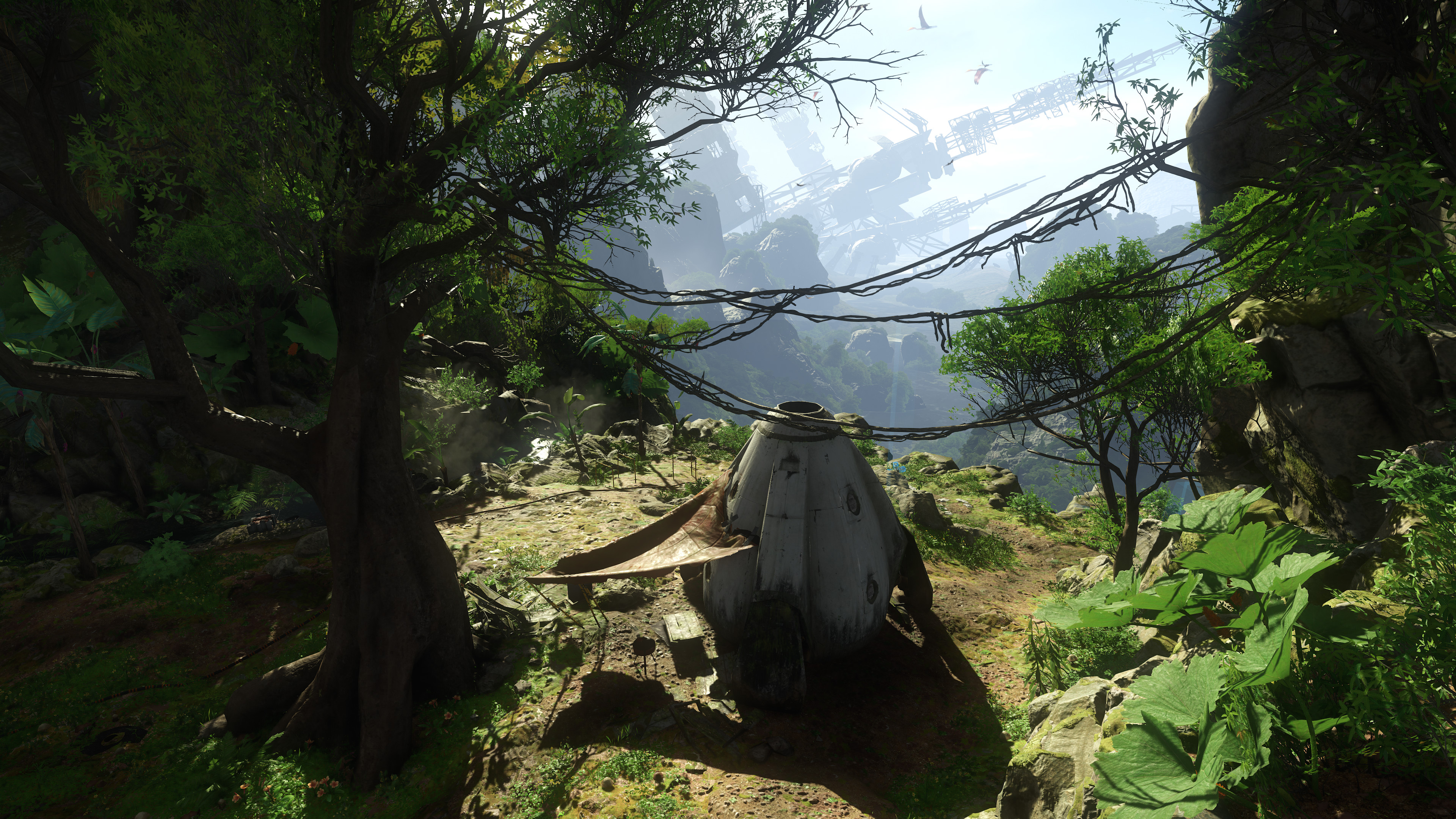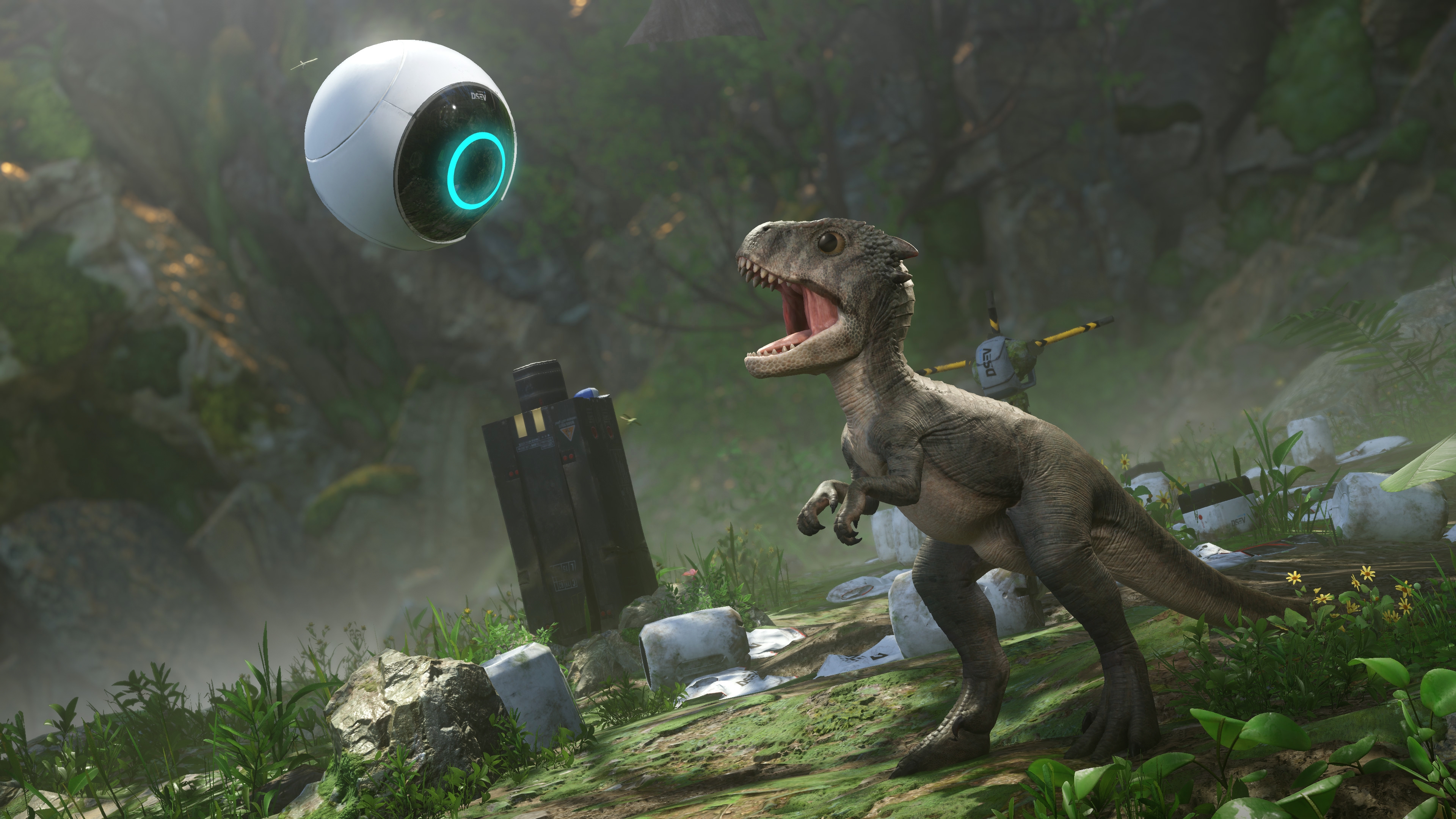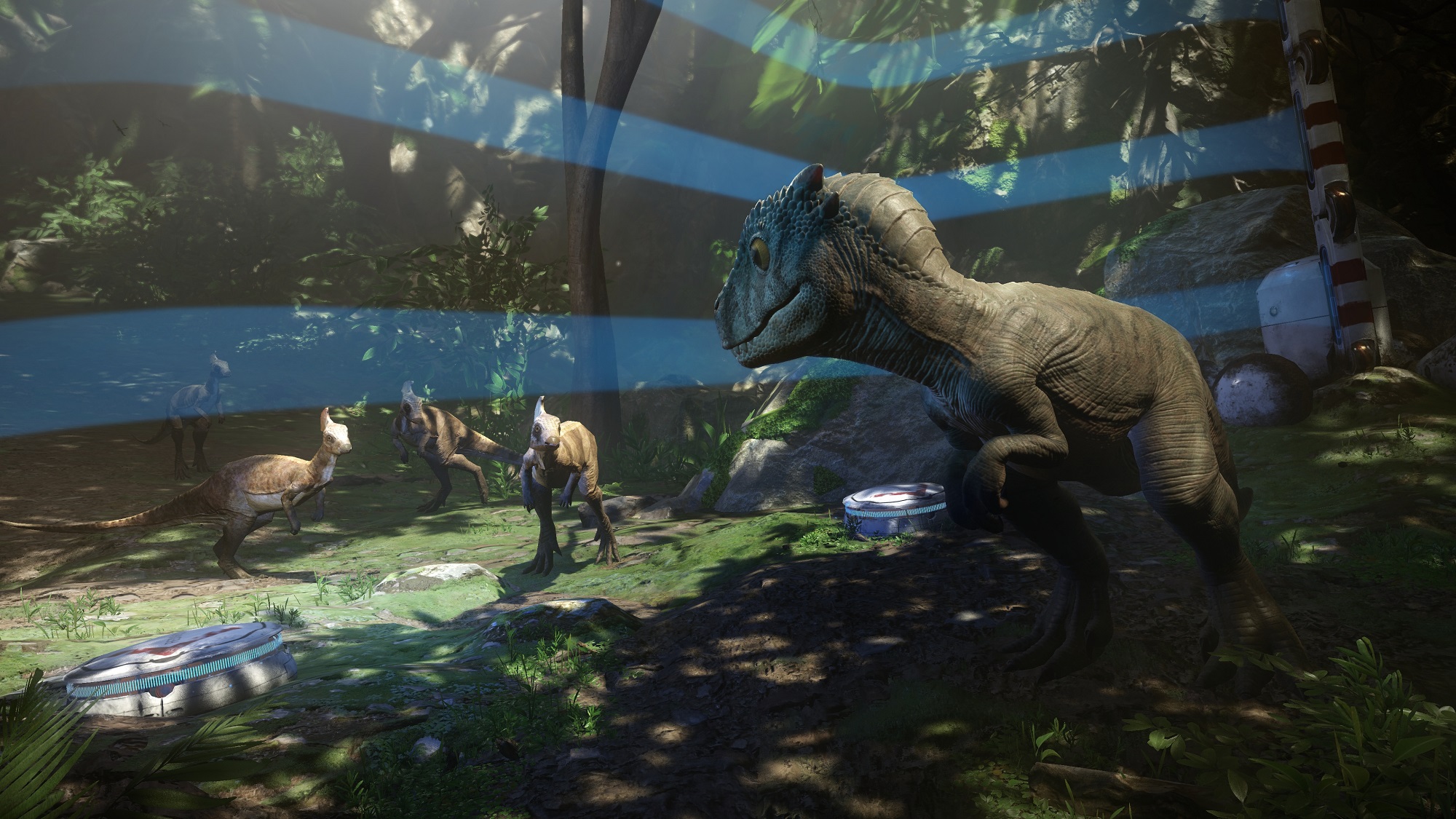Stranded, alone, and scared for your life — it’s the start or premise of a lot of enthralling tales. That general theme permeates through many great stories in the gaming world, several films, TV shows, and books and has served as an addictive hook for storytellers across multiple generations. Arguably the most popular of these is the early 1700s tale of Robinson Crusoe, who was stranded on a tropical island. When Crytek established the idea for Robinson: The Journey, an upcoming PlayStation VR-exclusive adventure title, that story served as their chief inspiration.
“As you can probably tell from the title, Robinson Crusoe is a big inspiration for this game,” said Elijah Freeman, Executive Producer on Robinson at Crytek. “Except you’re stranded on an entire foreign planet instead of just an island.”
In the game, you play as a young boy named Robin, trying to survive on the planet Tyson III after your ship, the Esmeralda, crashes. I got the chance to check out a new demo of the game in a private meeting with Crytek. When we played the game previously at E3 and Gamescom, the demos focused on a linear chunk of gameplay that consisted of light puzzle mechanics, some climbing, and about 5 or so minutes of actual content. This time, I played for about 20 minutes in a region that was much more open-ended.
“It’s a boy that crash lands on a planet inhabited with dinosaurs. You have a robot companion — HIGS — and as you move towards the end of the main storyline, HIGS will keep the narrative pushing forward,” said Freeman. “It pulls you in certain directions, but you don’t have to necessarily listen to him, you can do whatever you want and the narrative will adjust to where you are. Ultimately there is an overarching story of survival, hope, and exploration. Towards the end there is a big climactic event.”
While he was coy about why the game was called Robinson if the main character is actually named Robin, Freeman did allude that it was an important plot point to consider. My gut tells me that maybe there is some ancestral lineage at play here between Robin, the boy, and Robinson Crusoe of legend. A bit of a Nathan Drake and Sir Francis Drake Uncharted vibe, as it were. That reference would fit the context of the adventure quite well, as Crytek is building a game with a heavy focus on exploration and atmosphere.
“You can go anywhere you want in this game,” said Freeman. “There are lots of little gating mechanics that segment the game into areas, but it’s not a linear experience. The idea is that we want people to spend time wandering around. There are so many hidden things in this game. You could spend hours just looking for all of the collectible bits hidden everywhere.”
Going “anywhere you want” is a bit of a buzz phrase in the game community these days, but it seems to hold true here for the most part. As you explore the world, you’ll unlock fast travel locations to let you quickly go from one point to another. Freeman iterated that this wasn’t to discourage backtracking — he encourages it, actually, if you want to uncover all of the game’s secrets — but that he wanted to make sure people didn’t have to do anything that they didn’t want to do.
The build I played didn’t actually begin at the very start of the game, but it was close. I started this adventure inside of a space pod, allowing me to look around, interact with objects, and get my bearings. Eventually, I approached the pod door and opened it. That was the first moment when my jaw dropped, just looking at the gorgeous, sprawling landscape before me, dotted with flying dinosaurs soaring through the air. It felt similar to the theme song moment in the first Jurassic Park film.
“We wanted to build an ebb and flow to the game design,” explained Freeman. “Make it so you have points where there isn’t much happening, but you get pulled to something interesting, which takes you down a certain path, then you find something cool, and then you’re back to searching. It’s an experience of frequent peaks and valleys, rather than big individual set piece moments. The timing is roughly every 2-3 minutes we want someone to have one of those peaks as a balanced game experience throughout the whole game.”
The area around me appeared to be a base camp of some kind that was in desperate need of power, as a generator had stopped working. There weren’t any clear visual indicators of where to go — a testament to how immersive and sandbox-focused nature of an experience they’re building — so I just started walking. I found a basketball hoop and a box of balls, so I decided to play around a bit. Using my telekinetic tool, I could point at objects and make them levitate. This was a great device for shooting hoops (and missing) but is also a cornerstone of the game’s approach to puzzle solving.
“There are three main mechanics in this game,” explained Freeman. “There is obviously a levitation mechanic, there is climbing as we showed in the last demo, and there is a mechanic that lets you scan things. There are others that we will reveal over time, but those are the main ones. We wanted to maintain that feeling that this is a sandbox for you to explore and give you tools to solve puzzles, but how you choose to do it is up to you.”
The scanning, just as the levitation and climbing, worked very intuitively. I could toggle my tool to become a scanning device instead and when I pointed it at living creatures, small nodes would appear. This turned into a minigame of sorts, where I had to collect all the green dots and avoid the red dots to fully “scan” the creature. That filled my database — accessed by clicking the PS4 controller’s touchpad — with info logs, voice recordings, and more of my discoveries. It resembled a database you’d find in most other modern games, with a clean and attractive visual display.
Each element of the game felt like a polished piece of a larger overall experience, which brought credence to the feeling that this is likely one of the more polished and fully-developed single player titles we’ve seen in VR thus far and especially on PS VR, although I’ve been told the experience will only last around 3-5 hours, depending on how thorough you are. The exact length of the experience is unclear, since it’s such an open ended design, but it should hopefully provide enough content for players.
“As you explore, things will start to get pretty intense, these are dinosaurs after all,” said Freeman. “Based on the tools you have at your disposal, these aren’t things you can really use to defend yourself. You have to actually use your wits and outsmart things to survive.
“When we first started designing Robinson, we wanted to make a game without any weapons, which was a big challenge for us, because when we design a game [at Crytek] we think about game mechanics in terms of weapons and positions on a map, such as with Crysis. We definitely had those moments where we would be standing at this high cliff in Robinson and just think to ourselves, ‘Wow, this would be a great spot to have a sniper rifle right now!’ but that’s not what this game is about. I think that would change the ESRB a bit, there are no violent actions here.”
It’s a big change of direction for a studio like Crytek, admittedly, but it’s one that seems to be paying off. During my demo I never felt any forms of motion sickness, despite the game’s reliance on traditional control stick movement. There as a “comfort” turning mode enabled, so pushing the thumbstick to the right or left would cause me to quickly snap in small degrees rather than fluidly twist my character, but they assured me there would be a lot of alternate control options for those that are more or less prone to VR discomfort.
The last major new piece of this demo came in the way of Laika, a second companion you’re paired with in Robinson. She’s a small dinosaur that, despite HIGS’ disliking of her, is incredibly useful. I could point somewhere and tell her to go there, I could call her to me, I could play hide and seek with her, and I could even ask her to roar. That last bit was useful in order to scare off some critters that were causing a gate to act up and prevent my progression.
“Partnering with Sony was a good idea, they have vast experience supporting games, our relationship is really good too,” said Freeman. “The broadness of the adventure we established in the IP when we were coming up with this experience. And it has room to grow — it could go somewhere else in the future. Anything is possible. This game, specifically, only happened because of VR.”
I also made sure to ask about the flying dinosaurs I was seeing in the sky and on the promotional posters and artwork at the end of the interview. Any chance we’d get to take flight on the back of one of those? Or fly a repaired spaceship?
“I can say this: you won’t be repairing a ship, but you won’t always walk on the ground,” said Freeman. “As for the flying dinosaurs, that would definitely be awesome.”
Fingers crossed on that one.
—
Robinson: The Journey is currently slated as an exclusive for the launch window of the PlayStation VR headset, which releases on October 13th.

